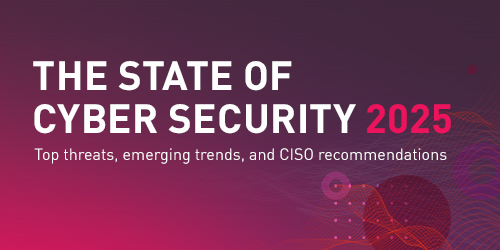Cyber security Management in Action
A cyber security management platform governs how you continuously monitor assets to prevent unauthorized access and malicious activity. It overlooks the entire cybersecurity framework, ensuring technologies and solutions work together to eliminate security gaps and maintain compliance.
This includes implementing security strategies that cover a range of functionality, such as:
By combining these activities, cybersecurity management provides a unified strategy.
The Importance of Cyber security Management
The Global Cybersecurity Outlook 2025 Report from the World Economic Forum found that 72% of respondents stated cyber risk has grown in the past year.
The report found the leading contributing factors to be:
-
- The adoption of AI tools without proper safeguards in place.
- Generative AI increasing the sophistication of attacks, in particular, social engineering vectors.
- Complex supply chain interdependencies introducing new vulnerabilities.
- Geopolitical tensions increasing the risk of cyber espionage and state-sponsored cyber attacks.
- A shortage of cybersecurity talent.
Plus, while new regulations aim to increase resiliency, the fragmented nature of legislation across different jurisdictions leads to challenging compliance requirements. With the threat of cyber attacks growing, a significant burden is placed on your security posture.
Those with robust cybersecurity management structures and strategies are best positioned to manage the increasing risk – limiting the chances a cyber-attack is successful and minimizing the impact if successful.
In the current business landscape, cybersecurity management failures can lead to your business failing.
The Different Types of Cybersecurity Management
Given the range and complexity of potential IT infrastructure, more focused security management approaches are often utilized to better suit specific deployments. These include:
Information Security Management
Information security management focuses on protecting business data by identifying risks and developing remediation strategies based on the resources available.
It can be broken down into three main components:
- Confidentiality: Only allowing access to authorized users, i.e., preventing data breaches.
- Integrity: Guaranteeing the accuracy and completeness of business data, i.e., ensuring hackers don’t corrupt or alter data.
- Availability: Providing continuous access to authorized users regardless of their location, i.e., preventing Distributed Denial of Service (DDoS) and other attacks that limit data availability.
While the goal of information security management policies is to protect corporate data, implementation is often governed by industry regulations (HIPAA, PCI DSS, etc.)
Network Security Management
Network security management brings together the different solutions to protect networks. These solutions include:
- Firewalls
- Data backup
- Access controls
- Network segmentation
- Email security
- Staff training
Business networks act as the primary entry point for hackers and malicious code.
Centralizing the management of all network security solutions helps manage threats and improve operations through enhanced visibility, improved efficiency, reduced security gaps and configuration errors, faster threat detection, and quicker updates.
Endpoint Security Management
Endpoint security management protects businesses from the risks with non-compliant devices (e.g., laptops, phones, etc.) or endpoints.
Modern operations mean digital assets are accessible from devices that were not configured by IT teams.
- These devices may not comply with internal security policies
- They could be infected with malware
Endpoint security management ensures access is only granted to compliant devices. It allows you to define a set of rules for different types of users and devices to reduce risk while simplifying operations.
Security Management in the Cloud
Security management in the cloud defines how an organization limits threats and vulnerabilities while utilizing cloud networks and applications. This includes:
- Identifying all cloud services and analyzing for vulnerabilities.
- Adjusting privacy and security settings to increase protection.
- Encrypting data to preserve data confidentiality and integrity.
- Managing the devices and users with access to cloud services.
- Monitoring activity and identifying suspicious behavior.
Combining all these processes simultaneously with many cloud services and complex cloud environments creates significant operational challenges. Tools for cloud security aim to centralize this functionality into a single platform for greater visibility, improved security, and enhanced operational efficiency.
4 Best Practices for Effective Cybersecurity Management
Cybersecurity management is broad with specific implementations depending on your IT infrastructure. However, there are best practices you can follow to help manage your policies and strategy.
#1: Understand Your Attack Surface
You can’t implement successful cybersecurity processes without a complete picture of your IT infrastructure.
You need to understand the attack surface your organization presents to would-be hackers and how they will look to identify or target potential vulnerabilities.
#2: Maintain Complete Visibility
Once you understand your entire IT infrastructure, you need a way of visualizing and monitoring it.
Implement a cybersecurity management platform that combines your entire web of cloud networks, on-prem systems, services and applications, devices, and more into a single tool to simplify overseeing and protecting your workloads.
#3: Integrate Cybersecurity into Your Culture
Cybersecurity considerations should be a significant aspect of your company culture and decision-making. It shouldn’t be considered the responsibility of only the IT and security staff. It should be something all staff are aware of and accountable for.
Regularly train staff and maintain high cybersecurity literacy across the workforce.
#4: Continuously Monitor and Adapt
Cybersecurity management should continuously monitor the risks posed by different assets and assess users’ behavior to develop a baseline for normal operations.
This allows you to adapt and respond if activity deviates from the norm or new vulnerabilities become apparent.
Check Point Cybersecurity Management Solutions
Successful cybersecurity management means organizing and implementing the right tools to protect every possible aspect of your IT infrastructure. Check Point offers an all-in-one toolkit for comprehensive cybersecurity management, no matter what your IT infrastructure looks like.
With Quantum Security management your security management solutions are consolidated into a single appliance for complete threat visibility and enhanced cybersecurity resiliency.
Get in touch today to talk to our sales team about how Quantum could solve your cybersecurity challenges.





